EDM, ECM, & ERMS: Essential Guide for Optimizing Document Management
Empowering Your Digital Transformation with Expert Insights into Document Management

Introduction to EDM / EDMS
Electronic Document Management Systems (EDMS) have revolutionized the way businesses manage their documents. In today’s digital era, where information is the currency of success, having a robust, efficient, and secure document management system is crucial. MPI Tech, with over 40 years of experience in document management and IBM mainframe solutions, stands at the forefront of this evolution, offering insights and solutions that transform business operations. This article aims to provide a comprehensive guide to EDM / EDMS, delving into its various facets and showcasing why it’s a pivotal element in modern business infrastructure.
EDMS is more than just a tool for storing and retrieving documents. It’s a comprehensive platform that facilitates document creation, collaboration, storage, retrieval, and management, all while ensuring data security and compliance with regulatory standards. In a world where the volume of data is exploding, and the speed of business is accelerating, EDMS serves as the backbone for efficient information management. It helps organizations keep pace with the demands of modern business, enabling quicker decision-making, enhanced productivity, and a significant reduction in paper usage, which also contributes to environmental sustainability.
MPI Tech’s expertise in this field is not just about offering a product; it’s about providing a solution that integrates seamlessly with existing business processes and systems particularly IBM mainframe environments. Our approach is to understand the unique challenges and needs of each business, tailoring our EDMS solution to fit like a glove. This approach ensures that businesses don’t just adopt an EDMS, but they harness its full potential to achieve operational excellence.
In this comprehensive guide, we’ll explore the nuances of EDM / EDMS, from its basic functions to advanced features, its role in digital transformation, and how it can be a game-changer for businesses in various sectors. Whether you’re a small business owner, a manager in a large corporation, or an IT professional, this guide will provide you with valuable insights into EDM / EDMS and how it can be leveraged for business success.
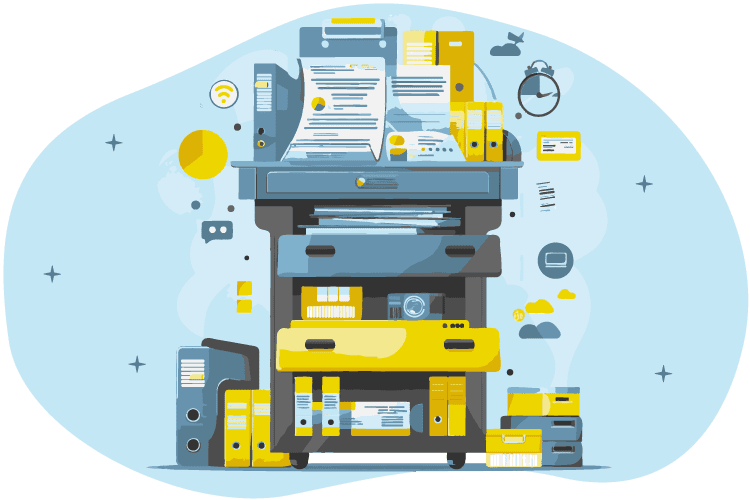
The Evolution of Document Management
The journey of document management is a fascinating tale of innovation and adaptation, reflecting the evolving needs of businesses and the advancements in technology. Starting from the rudimentary paper-based systems to today’s sophisticated electronic document management systems (EDMS), this evolution is a testament to our relentless pursuit of efficiency and effectiveness.
From Paper to Pixels: The Early Days
In the early days, document management was synonymous with physical storage. Businesses relied on file cabinets, where paper documents were meticulously filed and stored. This era was marked by an abundance of physical documents, leading to significant challenges in terms of space, security, and accessibility. The primary focus was on organizing and securing paper documents, with little thought given to efficiency or collaboration.
The Digital Revolution: Birth of Electronic Document Management
The digital revolution brought about a seismic shift in document management. The advent of computers and the internet introduced the concept of digitizing paper documents, paving the way for electronic document management. This shift was driven by the need for faster access to information, enhanced collaboration, and a reduction in the reliance on physical storage. Digital document management systems began to offer functionalities such as indexing, search and retrieval capabilities, and version control, revolutionizing the way businesses managed their documents.
Rise of EDMS: Advanced Features and Integration
As technology advanced, so did the capabilities of EDMS. These systems evolved to offer more than just document storage and retrieval. They began to incorporate advanced features like workflow automation, access control, and integration with other business systems. This era saw the EDMS becoming a central part of business operations, facilitating not just document management but also enhancing overall operational efficiency.
The Impact of Cloud Computing and AI
The introduction of cloud computing and artificial intelligence marked another significant milestone in the evolution of document management. Cloud-based EDMS offered flexibility, scalability, and remote access, changing the dynamics of how and where work was done. Artificial intelligence brought in capabilities like automated data extraction, intelligent categorization, and predictive analytics, making EDMS more efficient and intelligent.
The Future: Anticipating Next-Gen Innovations
Looking ahead, the future of document management is poised for even more groundbreaking innovations. The integration of blockchain for enhanced security, the use of big data analytics for better insights, and the continual advancement of AI and machine learning promise to take EDMS to new heights. These advancements will not only streamline document management processes but also transform them into strategic business tools that offer competitive advantages.
Conclusion: A Continuing Journey of Transformation
The evolution of document management is an ongoing journey, one that mirrors the broader trajectory of technological progress and business needs. From the humble file cabinet to the sophisticated, AI-powered cloud platforms of today, document management systems have continuously evolved to meet the changing demands of businesses. This journey is not just about technology; it’s about how we organize, access, and utilize information to drive business success. As we look to the future, it is clear that document management will continue to play a pivotal role in shaping the way businesses operate and thrive in an increasingly digital world.

Understanding EDMS : Basics and Beyond
The concept of Electronic Document Management Systems (EDMS) might seem straightforward at first glance – systems designed to manage and store documents in digital format. However, the true scope and potential of EDMS extend far beyond basic document storage and retrieval. In this section, we delve into the essentials of EDMS, exploring both its foundational elements and its advanced capabilities that make it an indispensable tool in modern business operations.
Basic Functions of EDMS
At its core, an EDMS serves as a digital repository where documents are stored in electronic format. This fundamental capability addresses the primary challenge of managing paper-based records: physical space. But the benefits of digitization are not limited to space-saving. The digital format also facilitates easier searching, indexing, and retrieval of documents, dramatically improving efficiency compared to traditional file cabinets.
Beyond storage, EDMS offers several other key functionalities. Document indexing, for example, allows for the categorization and tagging of documents, making them easily searchable. Advanced search functions enable users to locate documents using various criteria such as keywords, document type, author, or date created.
Collaboration and Workflow Integration
Modern EDMS platforms are not just static repositories; they are dynamic environments that enable collaboration and workflow integration. These systems allow multiple users to access and work on documents simultaneously, fostering collaborative work environments irrespective of geographical locations. Workflow automation features streamline business processes by routing documents automatically to the appropriate individuals for review, approval, or further action, thus saving time and reducing manual errors.
Security and Compliance
Security is a paramount concern in EDMS. These systems are equipped with robust security features like access controls, encryption, and audit trails. Access controls ensure that only authorized individuals have access to specific documents or sections of the EDMS, while encryption protects the data from unauthorized access. Audit trails provide a record of who accessed what document and when, which is crucial for compliance and security audits.
Advanced Features and Analytics
Many EDMS now incorporate advanced features such as version control, which maintains a record of changes made to documents. This feature is vital in environments where document accuracy and history are crucial, such as legal or financial services.
Furthermore, some EDMS integrate analytics tools that can provide insights into document usage patterns, helping businesses optimize their document management strategies. These analytics can reveal which documents are accessed most frequently, who are the primary users, and how document access trends change over time.
Integration with Other Systems
A key strength of contemporary EDMS solutions is their ability to integrate with other business systems such as Customer Relationship Management (CRM) platforms, Enterprise Resource Planning (ERP) systems, and even email clients. This integration enables seamless information flow across various business functions, enhancing overall organizational efficiency.
The Role of Cloud and Mobile Access
The advent of cloud-based EDMS has further expanded the capabilities and accessibility of these systems. Cloud-based solutions offer the advantages of remote accessibility, scalability, and reduced need for on-premise infrastructure. Additionally, with the increasing use of mobile devices in business, mobile access to EDMS allows employees to access and manage documents anytime and anywhere, increasing productivity and flexibility.
Conclusion
Understanding EDMS involves recognizing its role as a comprehensive solution for managing the lifecycle of documents in a digital environment. From basic storage and retrieval to advanced features like workflow automation, security, and analytics, EDMS have evolved into powerful tools that enhance productivity, ensure compliance, and drive business innovation. As we move further into the digital age, the importance of efficient and effective document management systems like EDMS will only continue to grow, making them essential components of modern business infrastructure.
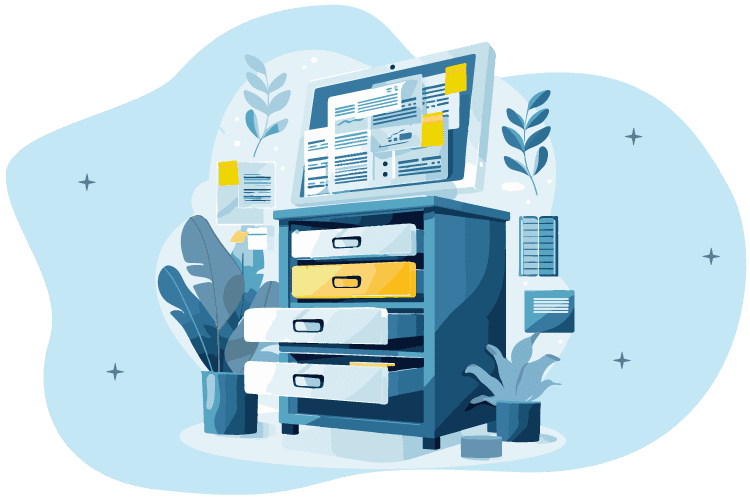
Why EDMS? The Business Case – Efficiency and Cost-Savings
In an era where data is king and efficient information management is critical, Electronic Document Management Systems (EDMS) have emerged as indispensable tools for businesses. MPI Tech, with its 40-year expertise in document management and IBM mainframe solutions, strongly advocates for the adoption of EDMS. The business case for EDMS revolves around two core benefits: efficiency and cost-savings, each critical in the contemporary business landscape.
Enhanced Efficiency with EDMS
- Streamlined Document Access and Retrieval: EDMS allow for the quick and efficient retrieval of documents. Unlike traditional paper-based systems where files can be misfiled or lost, EDMS provide indexed and searchable databases that make finding documents a matter of seconds, not hours.
- Improved Workflow Management: EDMS automate and optimize workflows, ensuring that documents are routed to the right person at the right time. This automation reduces bottlenecks in processes, such as approvals or reviews, thus enhancing overall business efficiency.
- Collaboration and Remote Access: With many businesses adopting hybrid or remote work models, EDMS facilitate collaboration. Team members can access and work on documents simultaneously from different locations, fostering a collaborative work environment that is not limited by geographical boundaries.
- Integration with Existing Systems: MPI Tech’s EDMS solutions integrate seamlessly with IBM mainframe systems and other business applications, ensuring that document management is not an isolated activity but an integrated part of the business process.
Cost-Savings Realized through EDMS
- Reduction in Physical Storage Space: By converting paper documents to digital format, businesses can significantly reduce the need for physical storage space, which in turn reduces costs related to filing cabinets, storage rooms, and even offsite storage facilities.
- Decreased Printing and Paper Costs: EDMS minimize the need for printing, photocopying, and paper, which not only saves money but also aligns with environmentally sustainable business practices.
- Reduced Labor Costs: The time employees spend managing paper documents is significantly reduced with an EDMS. This efficiency allows staff to focus on more value-adding tasks, rather than spending time on manual document handling.
- Long-term Cost Benefits: While the initial investment in an EDMS might seem substantial, the long-term savings are considerable. Reduced physical storage needs, decreased paper usage, and more efficient staff allocation lead to significant cost reductions over time.
- Risk Mitigation: EDMS reduce the risk of losing important documents due to misfiling, damage, or theft. This risk reduction is not only a cost-saver but also a critical component of business continuity planning.
Conclusion
The rationale for adopting an EDMS, as advocated by MPI Tech, rests on two pillars: efficiency and cost-savings. In today’s fast-paced business environment, the ability to access, manage, and share documents efficiently is not just a convenience; it’s a necessity. EDMS represent a strategic investment that yields dividends in terms of time saved, costs reduced, and overall operational excellence. For organizations looking to stay competitive and agile, especially those leveraging IBM mainframe solutions, implementing an EDMS is not just a choice, but a critical step towards future-proofing business operations.

Choosing the Right EDMS: A Buyer’s Guide
Selecting the right Electronic Document Management System (EDMS) is a crucial decision for any organization. It’s not just about choosing a tool for managing documents; it’s about finding a solution that aligns with your business objectives, integrates seamlessly with your existing systems, and enhances overall operational efficiency. Here are key factors to consider when selecting an EDMS:
1. Compatibility with Existing Systems
Ensure that your EDMS can easily integrate with your current IT infrastructure, including hardware, software, and network systems. For businesses relying on IBM mainframe solutions, it’s essential to select an EDMS that works harmoniously with these systems.
2. Scalability and Flexibility
The EDMS should be able to grow and adapt to your business. Consider whether the system can handle an increasing volume of documents and additional users as your business expands. Flexibility in terms of customizing features to meet specific business needs is also important.
3. Security and Compliance
Security is paramount in document management. Look for an EDMS that offers robust security features, including access controls, encryption, and audit trails. Additionally, ensure the system meets industry-specific compliance requirements, such as GDPR for data privacy or HIPAA for healthcare documents.
Worldwide, 71% of countries have data protection and privacy legislation.
– Source: Unctad (UN trade & development)
4. User Experience and Accessibility
The EDMS should be user-friendly and intuitive. A system that is difficult to navigate can hinder user adoption and reduce efficiency. Also, consider accessibility features, such as mobile access and support for remote users, especially in today’s increasingly mobile and remote work environments.
5. Document Capture and Indexing Capabilities
Efficient document capture and indexing are critical for easy retrieval and management. The system should offer robust scanning capabilities, OCR (Optical Character Recognition), and efficient indexing tools to organize documents to make them easily searchable.
6. Workflow Automation and Collaboration Features
Examine the EDMS’s capabilities in automating workflows and facilitating collaboration. Look for features like automated document routing, version control, real-time collaboration tools, and notification systems that streamline business processes and enhance teamwork.
7. Data Backup and Recovery
The ability to back up and recover data is essential for any EDMS. Evaluate the system’s backup capabilities and disaster recovery plans to ensure your documents are protected in the event of a system failure or other emergencies.
8. Customization and Integration with Other Applications
A good EDMS should allow for customization to fit your unique business processes and should be able to integrate smoothly with other business applications such as CRM, ERP, and email systems.
9. Vendor Support and Service
Consider the level of support and services offered by the EDMS vendor. Reliable customer support, training resources, and ongoing maintenance and updates are important factors for ensuring the long-term success of your EDMS.
10. Cost and ROI
Finally, consider the total cost of ownership, including initial setup costs, licensing fees, and ongoing maintenance expenses. Weigh these costs against the potential return on investment (ROI) the system will provide in terms of improved efficiency, reduced paper usage, and other savings.
Conclusion
Choosing the right EDMS requires careful consideration of various factors. It’s about finding a balance between functionality, cost, and alignment with your business needs. By taking into account these key considerations, businesses can make informed decisions that will benefit them in the long run, leading to improved document management, enhanced efficiency, and greater organizational success.
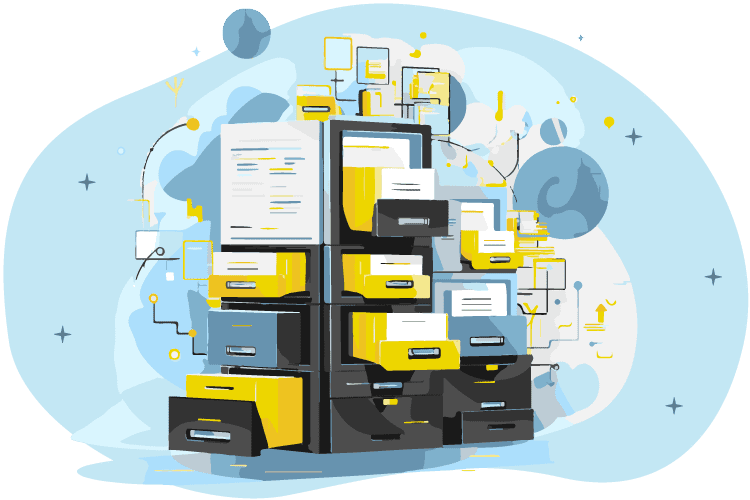
Security Features in EDMS
In the realm of Electronic Document Management Systems (EDMS), security is a paramount concern. With the increasing volume of sensitive and critical business information being digitized, the need for robust security protocols and features in EDMS is more important than ever. This section explores the various security protocols and features that are integral to a secure EDMS, ensuring that the documents and data within are protected against unauthorized access, breaches, and other potential security threats.
1. Access Control and Authentication
- User Authentication: EDMS typically require user authentication, which may include username and password, biometric scans, or multi-factor authentication. This ensures that only authorized individuals can access the system.
- Role-based Access Control (RBAC): EDMS often use RBAC to grant permissions based on the user’s role within the organization. This means that individuals only have access to the information necessary for their job functions, minimizing the risk of unauthorized access to sensitive documents.
2. Encryption
- Data Encryption: To protect data both in transit and at rest, EDMS use encryption. This means that even if data is intercepted or accessed by unauthorized individuals, it remains unreadable and secure.
- End-to-End Encryption: Some EDMS offer end-to-end encryption, ensuring that documents are encrypted from the moment they are uploaded until they are accessed by the intended recipient.
3. Audit Trails
- Document Access Logs: EDMS maintain logs of who accessed which document and when, providing a clear audit trail. This is crucial for compliance purposes and for tracking any unauthorized access attempts.
- Version History: Many systems also keep a version history of each document, detailing changes made, by whom, and when. This adds an additional layer of accountability and security.
4. Secure Document Sharing and Collaboration
- Controlled Sharing: EDMS allow for secure document sharing within and outside the organization. Permissions can be set for each document, controlling who can view, edit, or share it.
- Secure Collaboration Tools: For collaborative work, EDMS provide tools that enable secure communication and joint editing of documents, ensuring that data security is maintained even in a collaborative environment.
5. Compliance with Regulatory Standards
- Industry-specific Compliance: EDMS are designed to comply with industry-specific regulations, such as HIPAA for healthcare, GDPR for data protection in the EU, and others, ensuring adherence to legal requirements.
- Regular Compliance Audits: Many EDMS undergo regular audits to ensure ongoing compliance with these standards, providing businesses with the assurance that their document management practices are legally sound.
6. Disaster Recovery and Data Backup
- Regular Backups: EDMS include features for regular data backups, ensuring that documents are not lost in case of a system failure, cyberattack, or other disasters.
- Disaster Recovery Plans: A robust EDMS will have a disaster recovery plan in place, detailing procedures for restoring data and maintaining business continuity in the event of a disaster.
7. Anti-Virus and Malware Protection
- Integrated Protection: To guard against malware, many EDMS have integrated anti-virus and anti-malware tools that scan documents upon upload and regularly monitor the system for any threats.
Conclusion
The security features in an EDMS are crucial for protecting an organization’s digital assets. From stringent access controls and encryption to compliance with regulatory standards and disaster recovery plans, these features collectively ensure that the EDMS not only securely stores and manages documents but also safeguards them against a wide array of digital threats. As businesses continue to navigate the digital landscape, the security of their document management systems remains a top priority, critical to maintaining the integrity and confidentiality of their business information.
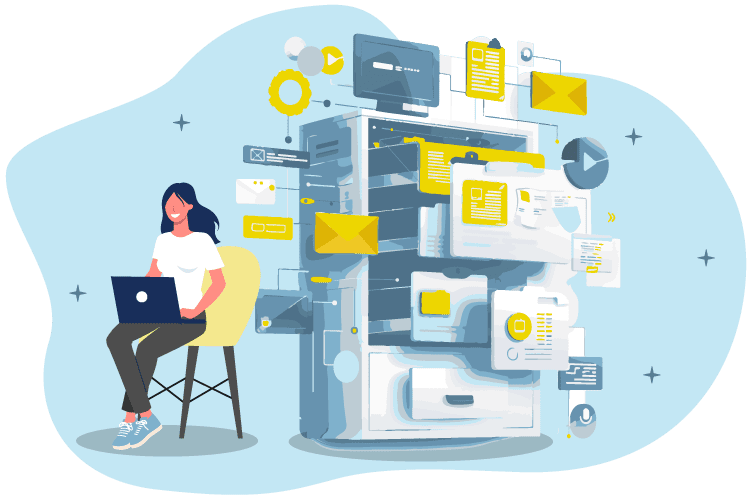
Integration of EDMS with IBM Mainframe Solutions
The integration of Electronic Document Management Systems (EDMS) with IBM mainframe solutions is a critical consideration for many large-scale enterprises and organizations. IBM mainframes are renowned for their robustness, security, and ability to handle substantial workloads, making them a staple in many high-demand sectors such as finance, healthcare, and government. The combination of EDMS with these powerful systems unlocks a host of benefits, enhancing efficiency and reliability in document management.
Seamless Integration for Enhanced Efficiency
- Data Consolidation and Accessibility: Integrating EDMS with IBM mainframes allows organizations to consolidate their document management with their core business processes. This integration ensures that all data, whether processed on the mainframe or stored in the EDMS, is accessible from a central point, thereby streamlining operations and reducing the time spent on data retrieval.
- Leveraging Mainframe Reliability: IBM mainframes are known for their exceptional reliability and uptime. By integrating EDMS with these systems, businesses can ensure that their document management processes are equally reliable, reducing the risk of downtime or data loss and ensuring continuous access to critical documents.
Enhanced Security and Compliance
- Robust Security: IBM mainframes offer some of the highest levels of security in the industry. Integrating EDMS with these systems means that document management can benefit from the same level of security, including advanced encryption and access controls, thus safeguarding sensitive information from unauthorized access and breaches.
- Compliance Adherence: Many organizations that use IBM mainframes operate in heavily regulated industries. The integration of EDMS facilitates compliance with various regulatory standards by offering advanced audit trails, retention policies, and secure archiving features, all of which are essential for meeting legal and industry-specific requirements.
Optimized Performance and Scalability
- High Performance for Large Volumes: IBM mainframes are designed to handle large volumes of transactions and data. When EDMS is integrated with these systems, it can leverage this capability to manage large volumes of documents efficiently, ensuring performance is not compromised, even under heavy loads.
- Scalability: As organizations grow, so does their need for document management. Integrating EDMS with IBM mainframes allows for scalable solutions that can expand in line with business growth, ensuring that document management capabilities evolve as the organization’s needs change.
Streamlined Workflows and Processes
- Automated Document Processing: The integration allows for the automation of document-centric workflows. Documents can be automatically routed, processed, and archived within the mainframe environment, enhancing efficiency and reducing manual intervention.
- Customized Solutions for Specific Needs: Given the versatility of both IBM mainframes and modern EDMS, organizations can tailor the integrated solution to meet their specific requirements, optimizing document management processes according to their unique operational needs.
Conclusion
The integration of EDMS with IBM mainframe solutions represents a strategic approach to document management for organizations that require robust, secure, and efficient handling of large volumes of documents. By leveraging the strengths of both systems, businesses can achieve a level of efficiency and security that aligns with their broader operational objectives, ensuring that their document management infrastructure is as resilient and capable as their core business systems. This synergy not only enhances the day-to-day operations but also positions organizations well for future growth and evolving industry challenges.

Electronic Content Management (ECM): Enhancing Digital Workflow
Understanding ECM in the Modern Business Environment
Electronic Content Management (ECM) systems are integral tools that help organizations manage their information assets across various platforms and formats. ECM systems go beyond simple document management to include the handling of emails, instant messages, and other electronic records. These systems are designed to capture, store, manage, and deliver content related to organizational processes.
Key Components of ECM
ECM encompasses a range of functionalities that are crucial for modern businesses:
- Content Capture: ECM systems digitize and index paper documents into electronic formats through scanning, which allows for easy retrieval and better data management.
- Content Management: This involves the storage, preservation, and retrieval of content. ECM provides a centralized repository that supports the management of all content types.
- Workflow Automation: By automating routine tasks and processes, ECM systems enhance operational efficiency and reduce human error.
- Information Security: ECM systems ensure the security of business information through access controls, encryption, and compliance with data protection regulations.
- Collaboration and Access: Facilitates collaboration by allowing multiple users to work on documents and content simultaneously from any location.
ECM and Business Process Integration
ECM systems are not standalone solutions; they integrate seamlessly with other enterprise applications such as CRM and ERP to enhance the flow of information across the organization. This integration enables businesses to leverage their content more effectively, making informed decisions and improving customer service.
Strategic Value of ECM
The strategic value of ECM systems lies in their ability to transform the way organizations access, use, and manage information. By streamlining content-related processes, ECM systems help businesses become more agile, responsive, and competitive. The comprehensive management of content also ensures compliance with regulatory requirements, reducing legal risks associated with information management.
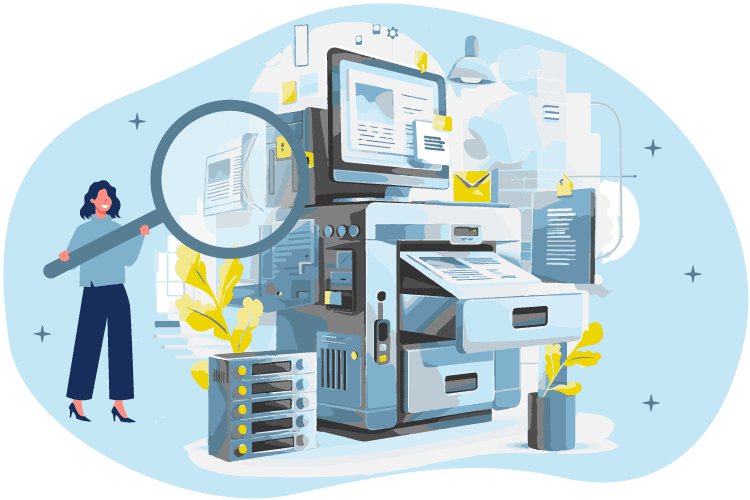
Electronic Records Management Systems (ERMS): Securing and Optimizing Records Management
Essential Role of ERMS in Governance and Compliance
Electronic Records Management Systems (ERMS) are designed to manage records throughout their lifecycle, from creation to disposal, in compliance with regulatory requirements. ERMS systems are critical for organizations that need to maintain records for legal, business, or compliance reasons.
Core Functions of ERMS
- Record Capture and Classification: ERMS capture records from various sources and classify them based on predefined criteria, ensuring they are stored correctly and are easily retrievable.
- Retention Management: These systems manage the retention schedule of records, automating the process of record retention and ensuring compliance with legal and regulatory frameworks.
- Access Control: ERMS provide strict access controls, ensuring that only authorized personnel can access sensitive records, thus maintaining confidentiality and integrity.
- Audit Trails and Reporting: Comprehensive audit trails and reporting capabilities of ERMS help organizations track access and modifications to records, an essential feature for compliance and governance.
Integrating ERMS with Business Systems
Integrating ERMS with other business systems enhances the ability to manage records effectively within the context of business processes. This integration ensures that all records, whether they are part of a workflow or a transaction, are managed according to the organization’s policies and regulatory requirements.
The Future of ERMS
As regulatory demands continue to evolve, the importance of effective records management systems grows. Future developments in ERMS are likely to focus on enhancing the automation of records categorization and management, improving integration with other business systems, and leveraging artificial intelligence to predict the needs for information governance.
Conclusion: The Critical Role of ECM and ERMS
The synergy between ECM and ERMS systems provides a comprehensive approach to managing an organization’s content and records. This integrated approach not only ensures operational efficiency but also strengthens compliance and governance frameworks. As businesses continue to face an increasing volume of information and tighter regulatory controls, investing in ECM and ERMS becomes not just strategic but essential for maintaining competitive advantage and ensuring long-term sustainability.

Understanding the Distinctions: EDMS, ECM, and ERMS
In the landscape of digital information management, three key systems—Electronic Document Management Systems (EDMS), Electronic Content Management (ECM), and Electronic Records Management Systems (ERMS)—play vital roles. While they overlap in functionality and are often integrated, each serves distinct purposes and addresses different organizational needs.
Electronic Document Management Systems (EDMS):
An EDMS primarily focuses on the management of documents in various formats. The core functions of an EDMS include the storage, retrieval, management, and tracking of electronic documents. EDMS are designed to help organizations reduce paper usage by digitizing documents, which improves accessibility and enhances the ability to search and retrieve information quickly and efficiently. The system is integral for businesses looking to streamline document handling, enhance collaboration, and automate workflows related to document processes.
Electronic Content Management (ECM):
ECM systems offer a broader scope compared to EDMS, encompassing the management of all types of content, including documents, emails, images, and multimedia files. ECM solutions aim to manage the entire lifecycle of content within an organization. This includes capturing, storing, securing, and delivering content across various channels. ECM systems are designed to integrate with other business processes, providing a robust framework for managing unstructured content and facilitating seamless collaboration and communication across an organization.
Electronic Records Management Systems (ERMS):
ERMS specifically focus on managing records of the organization that are often subject to regulatory compliance. These systems help in ensuring that records are retained and disposed of according to legal and organizational requirements. ERMS is crucial for risk management and compliance, providing functionalities such as record classification, retention scheduling, and legal holds. They ensure that records are easily accessible when needed while being securely maintained to prevent unauthorized access.
Conclusion: Seamlessly Integrate EDMS, ECM, and ERMS with MPI Tech
Navigating the complexities of document, content, and records management can be daunting. With MPI Tech’s expertise in EDMS, ECM, and ERMS, you can seamlessly integrate these systems to enhance your organization’s efficiency, ensure compliance, and transform your information management capabilities. Our solutions are designed to meet the unique challenges of your business, providing secure, efficient, and comprehensive management of all your digital information assets.
Are you ready to empower your digital transformation? Contact MPI Tech today to explore how our innovative EDMS, ECM, and ERMS solutions can be tailored to your needs, driving your business forward in an increasingly digital world. Let us help you manage your information more effectively, ensuring that your organization remains agile, compliant, and ahead of the curve.